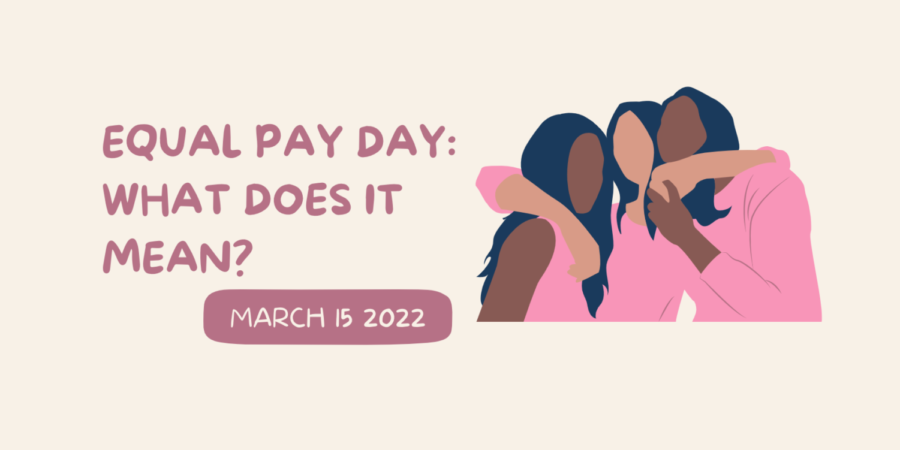Opinion: Equal Pay Day: What does it mean?
Think of the idea of the “gender pay gap.” What comes to your mind?
Is it from the mid 20th century? An idea of women working as nurses and teachers while men are in office jobs?
According to a survey of 8,566 Americans by SurveyMoney in 2019, 46% of men and 30% of women believe the idea of a modern-day gap in pay wages has been “made up to serve a political purpose” and is “not a legitimate issue.” Luckily, every year the March/April time frame brings awareness to the issue affecting millions of women.
According to the National Committee on Pay Equity, “Equal Pay Day” symbolizes how far into the year women must work, plus working the entire previous year, to earn what men earned for working only the previous year.
Each year, the census calculates how large of a gender pay gap there really is. Using census information on gender pay distribution, the government determines when Equal Pay Day is each year. This year, Equal Pay Day falls on March 15. To put this into context, the average woman would have to work all of 2021, plus up to March 15, 2022, to earn the same amount the average man earned for only working all of 2021.
The census estimated that in 2020 women made $0.83 for every $1 a man made. Last year in Texas, the average wage gap between men and women was $10,552. Discrimination and bias is just the beginning. This gap does not just affect women at one point in their lives – it has a snowball effect that causes women to have reduced earning capacity over their lifetimes. Women are more likely to spend their lives caring for their families while working full-time, so they are more likely to retire in poverty.
One tangible way we can see the effect is through the lawsuit with the U.S. Women Soccer Players Association that took place in February. After six years of fighting to earn the same pay as their male counterparts, the team won the settlement. They received $24 million and a pledge from the soccer federation to equalize pay between the men’s and women’s soccer teams, making one step toward equalizing women’s pay in sports.
As a woman who has grown up watching my mom work full-time while also taking care of her family, I recognize this will soon become an issue I deal with. I hope to one day have a job where I can financially take care of myself, but I realize I might still be affected by the gender pay gap when I am in the workplace.
So… what can we do?
Of course, the first step is to educate others to acknowledge that the gap exists. With every person in the workplace knowing that the gender pay gap is an issue, it can start to be addressed by more government officials.
A huge part of Equal Pay Day is getting involved to bridge the gap. Individual businesses and HR departments can examine their pay practices and comprehend whether they pay their employees equally. Employers can complete self-audits to determine whether they have a healthy workplace in which every employee feels valued.
While individuals cannot always participate this way, it is easy for everyone to help in other ways. You can join WAGE groups which are mobilizing women to talk about how the wage gap has personally affected them. Another way to help is always by contacting your local representatives and informing them of the issues in your area. Some of the time, these issues get pushed under the rug because not enough people are educated or care enough. Simply letting them know it is important to you can make big differences.
In whatever way you can, raising awareness on Equal Pay Day each year is one step closer to bridging the gap. It is 2022 – issues with gender disparity need to come to an end.

Senior Emma Short is the editor-in-chief and this is her third year on staff. She is also an advanced technician with Hebron Theatre and spends many...



